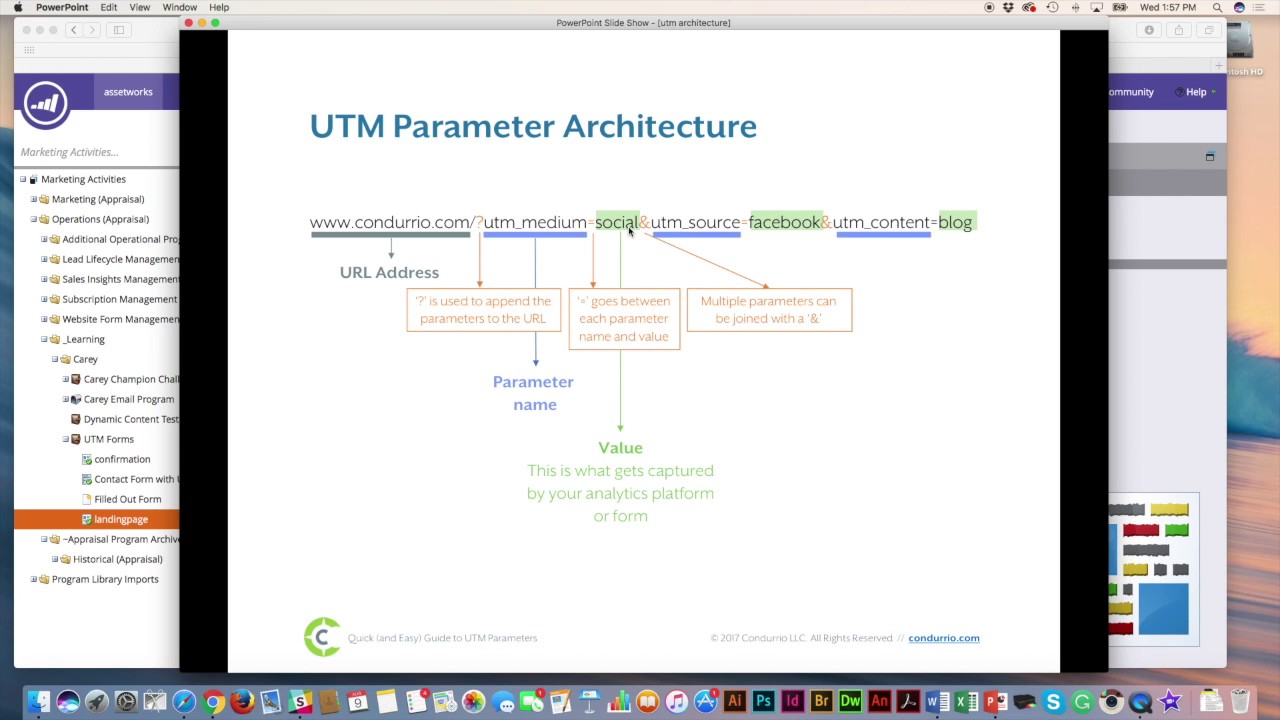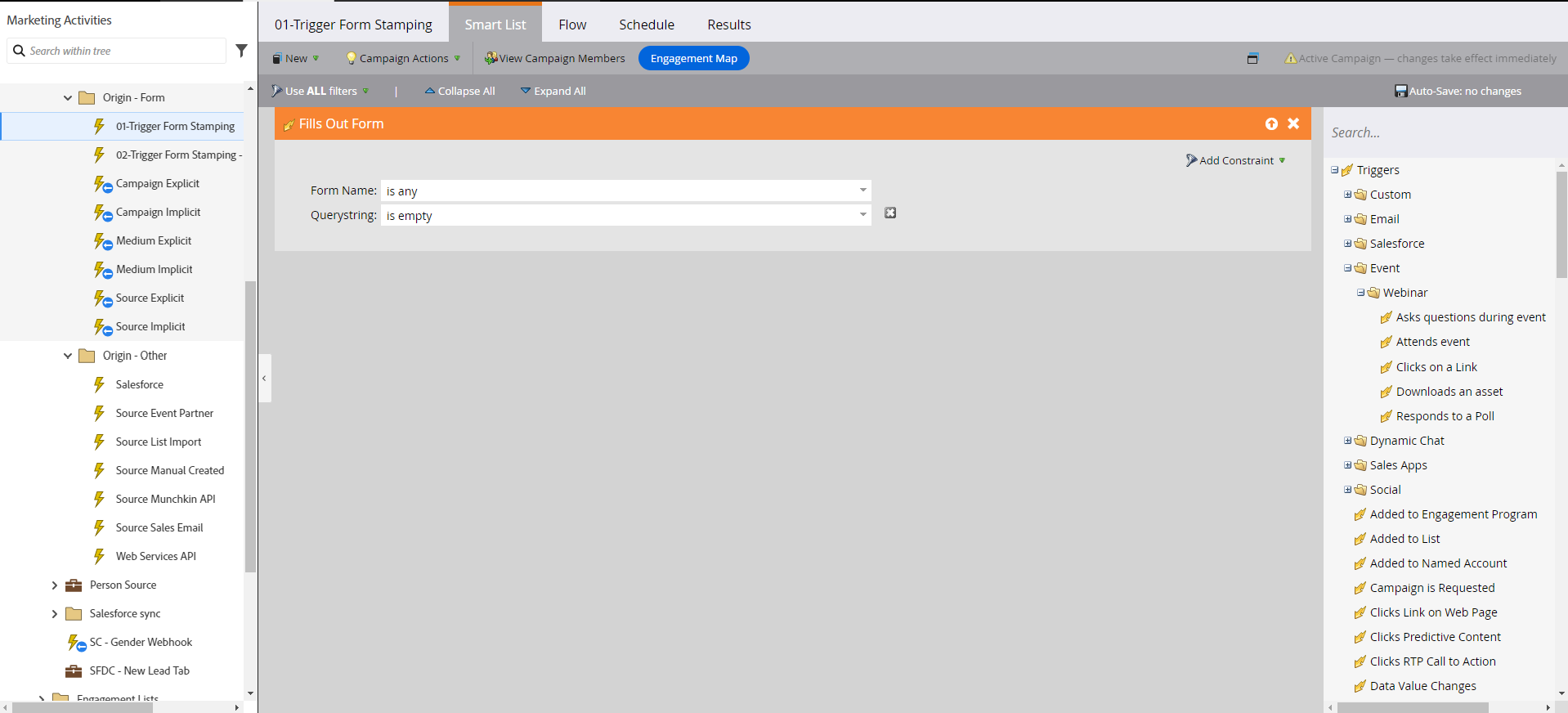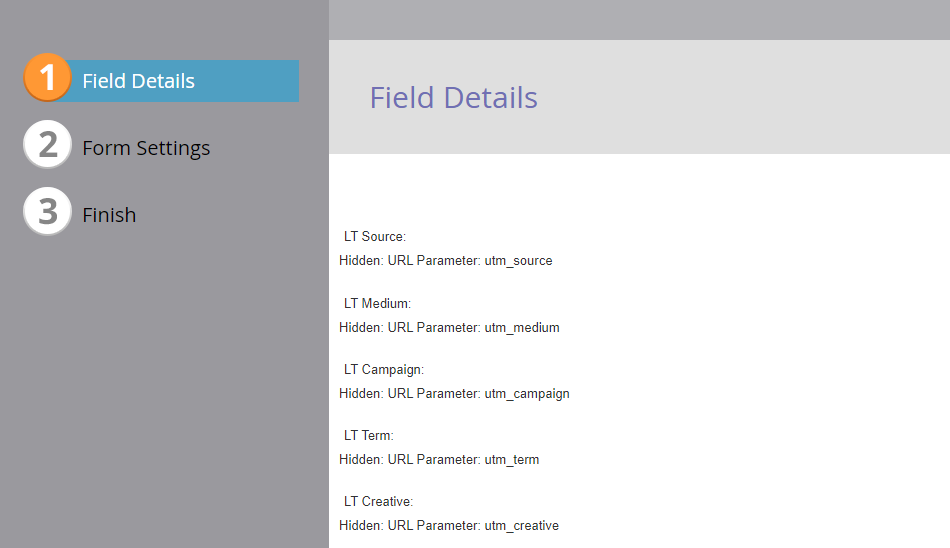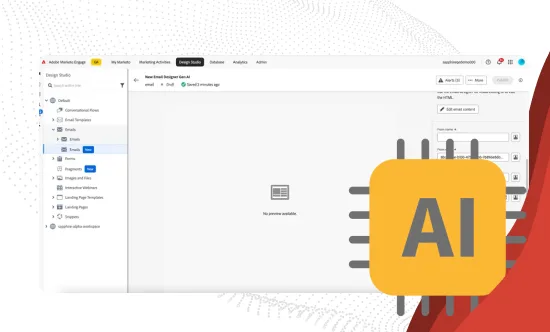How To Implement UTM Tracking In Marketo
Overview
One of the most powerful features of digital marketing is the ability to track and analyze campaign data using web analytics tools. Metrics, such as the number of impressions or conversions, help inform decision-making and marketing strategies.
Tracking information about website traffic and leads – like where a person has come from, or the campaign they clicked – is made possible by adding UTM parameters to the end of a URL. Here’s why marketers use UTM tracking, and how to set it up in Marketo.
A UTM parameter is a string of text added to the end of a URL to track various metrics of website traffic. There are 5 main parameters: 1. Source (utm_source) identifies the specific source of the traffic, such as a search engine, social media platform, newsletter, or website. For example, if the traffic is coming from Google, the utm_source parameter would be set to ‘google’. 2. Medium (utm_medium) specifies the marketing medium or channel that generated the traffic, such as organic search, paid search, email, or social media. For instance, if the traffic is from a paid (Cost Per Click) Google Ads campaign, the utm_medium parameter would be set to ‘cpc’. 3. Campaign (utm_campaign) identifies the overall marketing campaign associated with the URL. It’s used to distinguish between different campaigns, promotions, or initiatives. For example, if the URL is part of a summer sale campaign, the utm_campaign parameter could be set to ‘summer_sale’. 4. Content (utm_content) differentiates between different assets within the same campaign. It’s often used for A/B testing or tracking specific ads. For instance, if you’re running multiple banner ads as part of the same campaign, you could use the utm_content parameter to distinguish between them, e.g. ‘banner_ad1’, ‘banner_ad2’, and so on. 5. Term (utm_term) is used for tracking keywords in paid search campaigns. It specifies the keyword that triggered the ad click. For example, in a Google Ads campaign, the utm_term parameter might contain the keyword ‘football+boots’. UTM parameters are used to track performance across all digital marketing activities. They enable marketers to attribute the correct recognition to the impact of each activity. By analyzing UTM parameters in web analytics tools like Google Analytics, marketers can surface actionable insights, such as which campaigns are driving the most web traffic. Take this example. Imagine your data reveals large volumes of unknown traffic coming from LinkedIn. To capitalize on this channel, you might post more frequently or invest in paid campaigns. UTMs can also help with budget distribution. In Marketo, you can track the revenue generated by different assets or campaigns and use that information to inform where future budget is spent. Before you get started with UTMs, do a discovery session to unpack and understand everything about your data, including which UTM parameters your team will be using. UTMs are only valuable to your business if everyone on the marketing team is using them. If they don’t, you won’t have the complete picture, which can impact decision-making at every level. Once you’ve set up UTMs in Marketo, it’s possible to set up trigger campaigns based on UTM data. For instance, if the parameter ‘medium’ is Instagram, then it can be set to automatically trigger an email building on that interaction. It’s also possible to add UTMs to Smart Lists and reports to visualize data about your marketing efforts in a way that can be easily understood by your management team. You’re not restricted to those five parameters. You can develop custom parameters to track and report on other aspects of your marketing. For instance, you could add a date UTM to capture when an email is read. Users might arrive at your website via a URL with UTMs, but what if they navigate away from it? With hidden fields – typically in forms – you can set up Marketo to retrieve the UTM from the cookie instead of the URL. Here at Kapturall, we’re experts in marketing automation and the largest Marketo partner in the EMEA region. To discover what we can do for your digital marketing efforts, contact us.UTM parameters explained

Why digital marketers use UTMs
Tips and tricks for using UTMs
Do a discovery session
Develop a culture around UTMs
Set up trigger campaigns
Create Smart Lists and reports
Add your own UTM parameters
Use hidden fields in forms
SIGN UP FOR OUR NEWSLETTER
Alejandro Torres
Marketing Automation Manager at Kapturall
Alejandro currently leads a team of Marketing Automation Consultants at Kapturall. His career in Digital Marketing began in 2019 at Mediaset España. Since then, his passion for the digital world has led him to explore various fields within digital marketing before joining Kapturall. In this company, he has stood out as a Marketing Automation Consultant, being certified as a 2X Expert in Marketo. His inclination towards team sports and cooperation projects is reflected in the methodology he applies to his projects, making them an excellent collaborative work.




